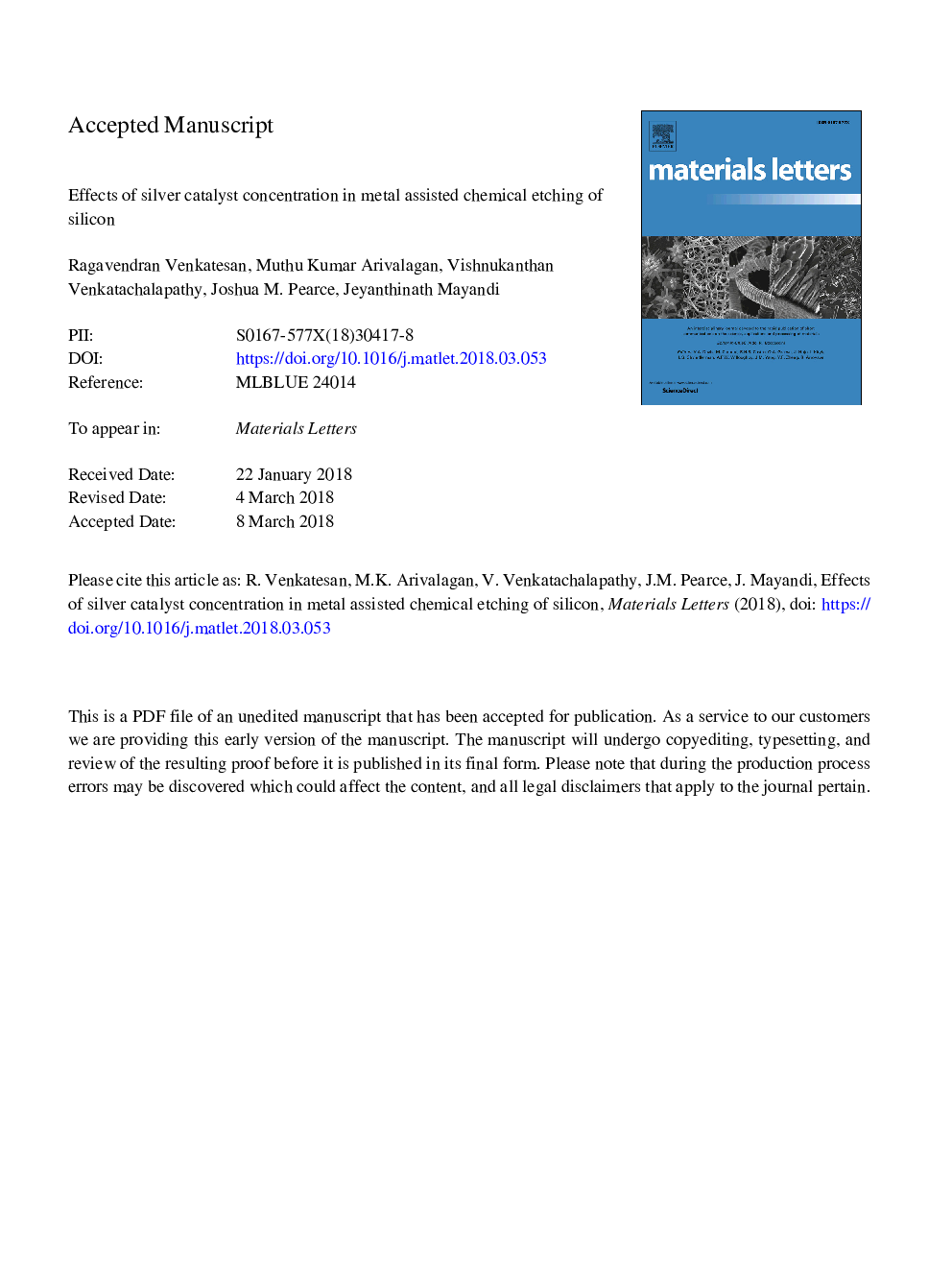| Article ID | Journal | Published Year | Pages | File Type |
|---|---|---|---|---|
| 8013486 | Materials Letters | 2018 | 10 Pages |
Abstract
A systematic investigation is performed to determine the effects of the concentration of silver on metal assisted chemical etching (MaCE) for nanostructure formation mechanisms on silicon as well as their resultant optical properties. Silver nitrate concentrations of 8â¯mM, 4â¯mM, 3â¯mM and 2â¯mM with hydrogen fluoride were used for the preparation of p-type silicon nanostructures. Experimentally, it is observed that when the catalysis molarity concentration is decreased in the etching processes, it resulted in nanostructures ranging from 140 to 60â¯nm, respectively over the concentrations investigated. A detailed analysis of the optical properties and structure provided insight into the physics of their formation. In addition, the results show the silicon nanostructures formed black silicon where in the visible region of the spectrum the reflectance dropped by an order of magnitude. The results indicate MaCE is a promising approach to the manufacturing of antireflection coatings on black silicon-based solar photovoltaic cells. MaCE is a simple and scalable approach to enhance the optical absorption of silicon and improve the overall efficiency of the solar cell without adding significantly to the complexity, capital expenditure or cost of production.
Keywords
Related Topics
Physical Sciences and Engineering
Materials Science
Nanotechnology
Authors
Ragavendran Venkatesan, Muthu Kumar Arivalagan, Vishnukanthan Venkatachalapathy, Joshua M. Pearce, Jeyanthinath Mayandi,
